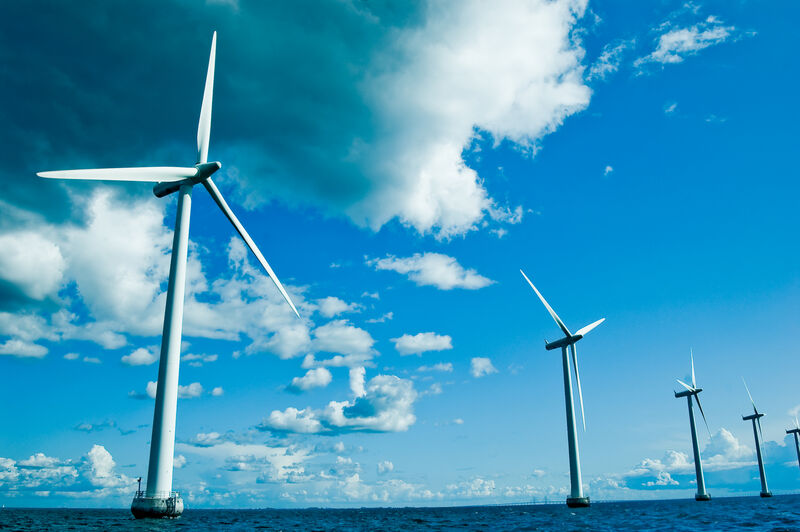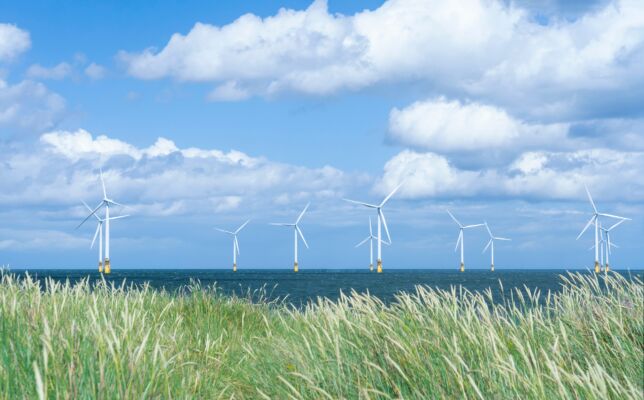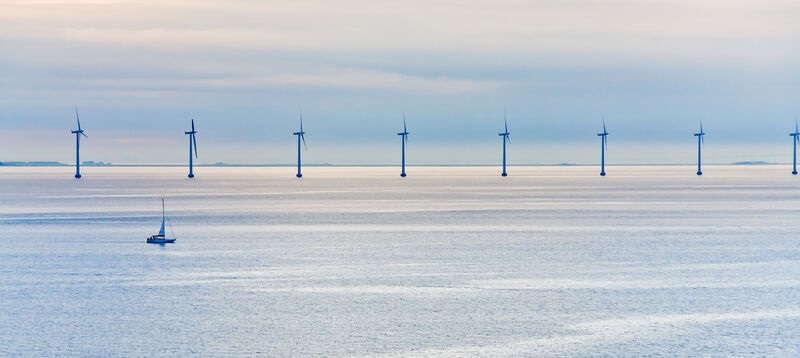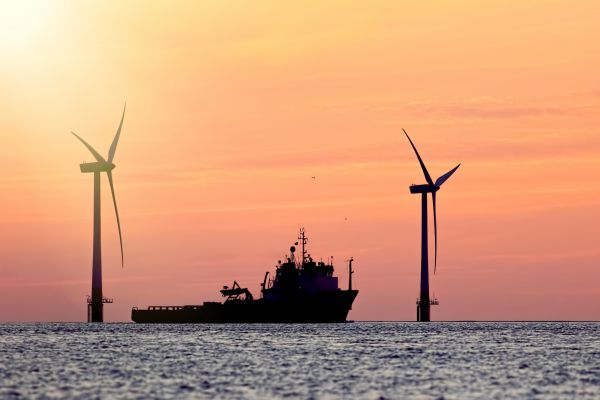While wind turbines on land are normally placed on concrete foundations, it’s very different at the bottom of the sea. Water depth, currents, size of waves, and the risk of ice can have a major impact on the foundation.
Concrete caisson
In shallow waters, the foundation is no different from an onshore turbine. Caissons created on land using steel and concrete are brought to the seabed and filled with gravel and sand. Furthermore, the heavy weight holds the wind turbine in place.
Pros: The caisson can withstand ice and harsh environmental conditions, with deployment being relatively simple.
Cons: In shallow waters, the caissons only work with small turbines of less than 10 meters.
Monopile
Monopiles are simple steel pillars driven into the seabed. They are used in water depths of less than 20 meters – not in the deep rocky ocean floors.
Pros: Monopiles are easy to manufacture and quick to install.
Cons: Pile driving noise can be heard at 750 meters below sea level and at a volume of up to 200 decibels, disrupting marine life, especially dolphins and porpoises. Compressed air can be injected into the water to create bubbles around the pile driving work as a remedy for noise cancellation. Although the offshore wind farm operators use soundproof steel pipes that muffle the noise, there is room for further development in this area. For example, instead of ramming steel piles into the seabed, these enormous structures can be forced in via vibrations into the deep waters. This may take a little more time, but is a relatively silent method than the pile driving one.
Pile structure
In greater depths, a single steel pile is not sufficient. Therefore, similar to oil platforms, several piles are used and interconnected. The piles are either anchored in the seabed with a concrete caisson or sunk like monopiles.
Pros: The cross-section of an individual pile is significantly smaller than that of monopiles, making them easier to install. They are suitable for greater depths than 20 meters.
Cons: Pile structures are expensive to manufacture compared to monopiles.
Suction caissons
A suction or bucket foundation consists of a steel cylinder that is open at the bottom. It is placed on the seabed from where the water is pumped out. This creates a vacuum that sucks the foundation firmly to the seabed. It is suitable for water depths of 20 meters and more.
Pros: Suction foundations do not have to be driven into the ground, which makes them more environmentally friendly. They are also easier to install and decommission.
Cons: They only work on homogeneous soils and not on sand.
Floating foundation
Wind turbines that are not built close to shore are usually anchored to the seabed and float on the ocean surface. A buoyancy body protrudes deep into the water and is held in position by steel cables.
Pros: They are ideal for use in deep waters far from the coast.
Cons: Attaching them to the seabed requires the use of either monopiles or suction foundations – with the same drawbacks. In addition, they must be precisely aligned so that they do not sway too much and the material does not fatigue prematurely.



